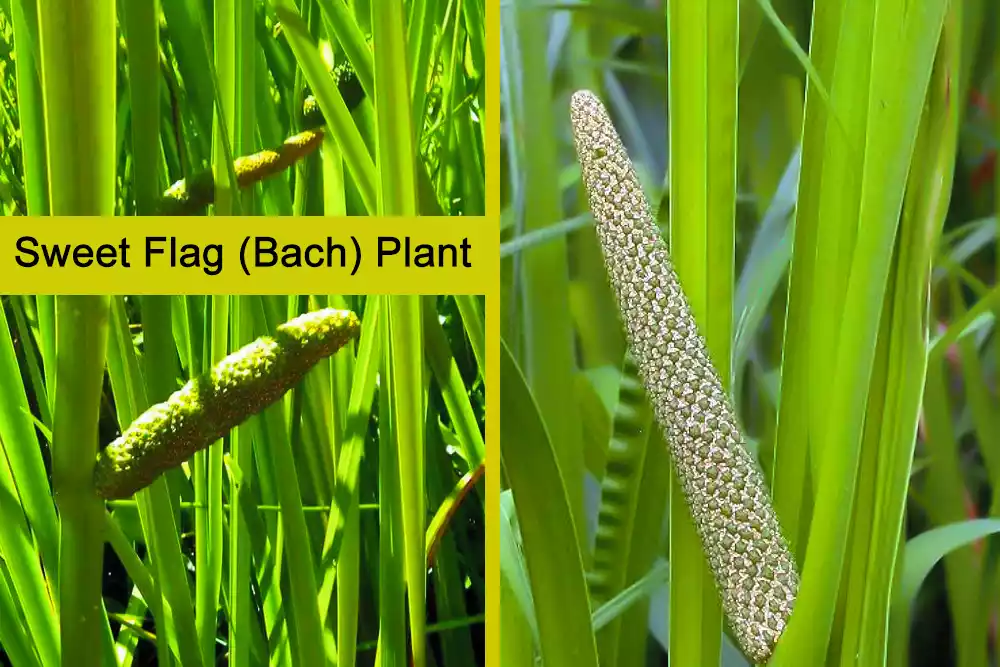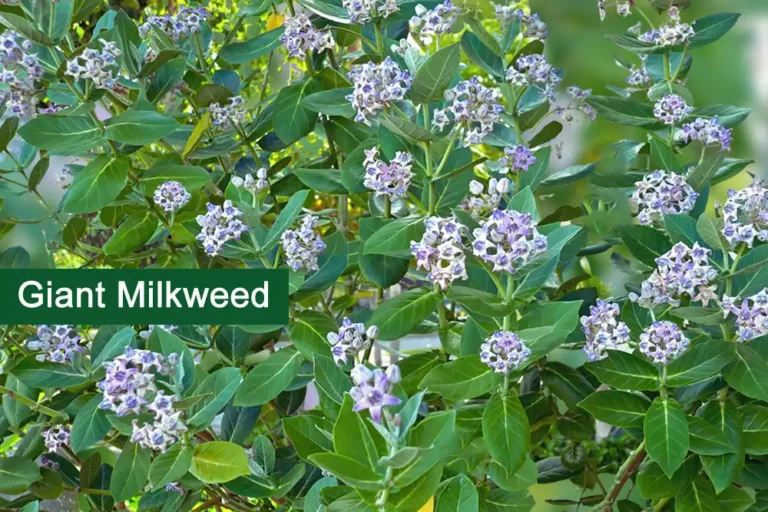Bach Plant (Sweet Flag) Medicinal Uses, and Benefits
The Acorus calamus is commonly known as Sweet Flag or Bach plant. This comprehensive overview covers its global distribution, medicinal uses, and diverse applications in traditional and modern contexts.
Table of Contents
Description of the Bach Plant (Acorus Calamus)
The stem of the Bach Plant (Acorus calamus) is erect, globous, grooved, and ribbed. The leaves have a single prominent mid-vein, with slightly raised secondary veins on both sides and many fine tertiary veins. The sympodial leaf is somewhat shorter than the vegetative leaves, and the margin is curly-edged or undulate. The spadix, during expansion, can reach a length between 4.9 and 8.9 cm. The flowers are minute and dense, measuring between 3 and 4 mm. The plant is infertile and shows an abortive ovary with a shrivelled appearance.
| Botanical Name | Acorus calamus |
| English Name | Sweet Flag |
| Urdu Name | Bach Plant |
| Family | Araceae |
| Habit | Perennial herb |
| Part Used | Leaves, roots, and stem |
| Medicinal Plants | Explore |
Distribution of Acorus Calamus (Bach Plant Plant)
Acorus calamus (Sweet Flag plant) is now found across Europe, in southern Russia, northern Asia Minor, southern Siberia, China, Japan, Burma, Sri Lanka, and northern USA. It is naturalized in Britain. In Pakistan, it is found in NWFP and AJK at elevations from 700 to 2000 meters.
Medicinal Uses of Acorus Calamus (Sweet Flag Plant)
Folk Use of Sweet Flag (Bach Plant)
An infusion of the Sweet Flag root can bring about an abortion, while chewing the root alleviates toothache. It is a folk remedy for conditions like arthritis, cancer, convulsions, diarrhea, dyspepsia, epilepsy, etc. Chewing the root is said to kill the taste for tobacco. The plant can also be burnt as incense and was formerly used as a strewing herb.
Tib and Ayurvedic Uses of Acorus Calamus
In Ayurveda, Acorus calamus (Sweet Flag) is highly valued as a rejuvenator for the brain and nervous system and as a remedy for digestive disorders. A homeopathic remedy is made from the roots, used internally in the treatment of digestive complaints, bronchitis, sinusitis, etc. It is said to have wonderfully tonic powers for stimulating and normalizing the appetite.
International Uses of Sweet Flag (Acorus Calamus Plant)
Internationally, Acorus calamus (Sweet Flag) is widely employed in modern herbal medicine as an aromatic stimulant and mild tonic. The root has properties such as being anodyne, aphrodisiac, aromatic, carminative, diaphoretic, emmenagogue, expectorant, febrifuge, hallucinogenic, hypertensive, sedative, stimulant, stomachic, mildly tonic, and vermifuge. In small doses, it reduces stomach acidity, while larger doses increase stomach secretions, making it useful in treating anorexia nervosa. Sweet Flag is also used externally to treat skin eruptions, rheumatic pains, and neuralgia. It is used in treating flatulence, dyspepsia, anorexia, and gall bladder disorders.
Culinary Uses of Acorus Calamus (Sweet Flag Plant)
The edible parts of the Sweet Flag (Acorus calamus) plant include the leaves, fruit, root, and stem, which are usually used as condiments. The rhizome is candied and made into sweetmeat. It makes a palatable vegetable when roasted and can also be used as a flavouring. The essential oil from the plant is used as a food flavouring. The dried and powdered rhizome has a spicy flavour and is used as a substitute for ginger, cinnamon, and nutmeg. A pinch of the powdered rhizome is used as flavouring in tea. The young and tender inflorescence is often eaten by children for its sweetness.
Growing Conditions for Bach Plant (Acorus Calamus )
- Climate: Dry temperate zone
- Temperature: Max: 32.2°C, Min: -25°C
- Rainfall: 2540 mm/year
- Soil: Prefers light sandy, medium loamy, and heavy clay soils
- pH Range: 5.5 to 7.5
- Reproduction: By seed and division of roots
FAQs About Sweet Flag (Bach Plant)
-
What is Bach Herb?
Bach herb refers to Acorus calamus, commonly known as Sweet Flag. It is a perennial herb with medicinal and culinary uses.
-
What is Sweet Flag Used for?
Sweet Flag is used in traditional and modern herbal medicine to treat digestive issues, respiratory conditions, and as a general tonic. It is also utilized in culinary practices as a flavouring agent.
-
What is the Common Name for Sweet Flag?
The common name for Acorus calamus is Sweet Flag. It is also sometimes referred to as Bach plant or calamus.
-
Is Sweet Flag edible?
Yes, Sweet Flag is edible. Its leaves, root, and stem are used as condiments, and the rhizome can be candied, roasted, or used as a flavouring agent.
-
How Tall Does Sweet Flag Grow?
Sweet Flag typically grows to a height of about 1 to 2 meters, depending on the growing conditions.
-
What are The Uses of Sweet Flag Root?
The root of Sweet Flag is used in herbal medicine for its anodyne, carminative, and tonic properties. It is also used to treat digestive issues and respiratory problems, and as a natural remedy to suppress tobacco cravings.
-
What is Calamus Used for?
Calamus, another name for Sweet Flag, is used in herbal medicine to treat digestive disorders and respiratory conditions, and as a general tonic. It is also used in some culinary applications.
-
What is Acorus Calamus Used for?
Acorus calamus is used for its medicinal properties to treat various ailments, including digestive and respiratory conditions. It is also used as a flavouring agent in food and beverages.
-
Why is Calamus Banned?
Calamus is banned in some countries due to concerns about the potential toxicity of one of its chemical constituents, beta-asarone, which has been shown to have carcinogenic effects in laboratory studies.
-
What is the Indian Name for Calamus?
The Indian name for calamus is “Vacha,” and it is widely used in Ayurvedic medicine.
-
Is Acorus Calamus Toxic?
While Acorus calamus is used medicinally, it contains beta-asarone, which can be toxic in high doses. It is important to use this plant under professional guidance.







